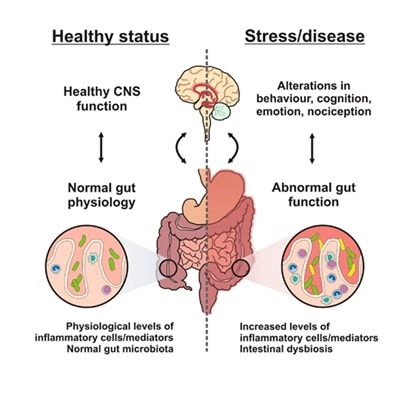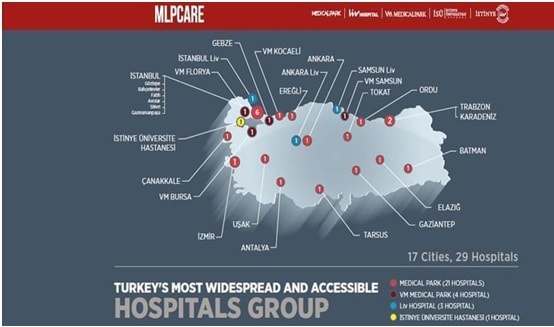Gastrointestinal microbiota includes bacteria, archaea, viruses, fungi and other eukaryotes. The genus Bifidobacterium is considered the dominant once; it has an important role on immunologic, hormonal and metabolic homeostasis of the host.
Recent studies demonstrated that the Mycosporin-like Amino Acids (MAAs) had prebiotic effects and they modulated host immunity by regulating the proliferation and differentiation of intestinal epithelial cells, macrophage and lymphocytes. Also MAAs modulate NF-κB and tryptophan metabolism. Modulation NF-κB and tryptophan metabolism induced a beneficial effect on central nervous cascade. The safety of Bifidobacterium species is known; although they do not produce MAAs, their presence is required for immunological response continuity of intestine.
Thereby we hypothesize that if we could create Bifidobacteria species producing MAAs via genetic engineering; they might have stronger immuno-stimulatory properties and might be used as more potent pharmacological agents in neurological diseases secondary to impaired microbiota.
Introduction
Microbial organisms live in close association with each other at human’s body. The gut microbiota contains many different ecological community of commensal, symbiotic and pathogenic microorganisms . The gut microbiota has anti-inflammatory, antioxidant, anti- oncogenic effects and it contribute to the immunological, hormonal and metabolic homeostasis of the host. The genus Bifidobacterium belonging to Actinobacteria phylum and it consist of Gram-positive, non-motile, often branched anaerobic bacteria.
The Bifidobacteria are one of the major species of human colon microbiota and they are frequently used as probiotic agents. Bifidobacterium species have immune modulatory, metabolic and anti-inflammatory effects which are not seen ın other gastro intestinal flora species. Bifidobacterium species have the highest level of intrinsic hydrogen peroxide resistance causing antioxidant activity. Bifidobacterium’s oligosaccharides metabolism has been shown in many studies; it is separated from others by its fermentation ability.
Bifidobacteria use the fructose-6-phosphate phosphoketolase pathway to ferment carbohydrates; by this pathway ındigestible fructans turn into Short Chain Fatty Acids (SCFA) as butyrate, which have beneficial effect on intestinal immunity and metabolism. Bifidobacteria are the main source of butyric acid production and they are used as probiotic ingredient in many foods.
Recently diminished production of SCFAs is considered as the cause of antibiotic-associated diarrhoea, inflammatory bowel disease and neurological disorders.comparative genome analysis revealed that the KLDS 2.0603 has most similar whole genome sequence compared with BB-12 strain. It seems that Cyanobacterium is the source of MAAs and we hypothesize that the genes of Cyanobacterium involved in MAAs biosynthesis could be transferred to the strain Bifidobacterium animalis subsp. lactis BB-12.
 Figure:Gut-Brain axis connection
Figure:Gut-Brain axis connection
Bifidobacteria’s role in gut microbiata and neurological system
The human intestinal microbiota influence neuro development, modulate behavior and contribute to neurological disorders. A functional link between gut microbiota and neurological diseases remains unexplored. Sampson et al. showed that gut bacteria regulate movement disorders in mice and suggest that alterations in the human microbiome represent a risk factor for Parkinson Disease (PD).
Also they showed SCFAs modulate microglia and enhance PD pathophysiology. An increase in inflammatory cytokines has been reported previously in autism spectrum disorders and increased cytokines have been reported in association with a regressive autism phenotype with significant communication challenges and aberrant behaviours. Luna et al. have showed distinctive mucosal microbial signatures in children with autism spectrum disorder and functional gastrointestinal disorders that correlated with cytokine, SCFA s and tryptophan homeostasis. Bifidobacterium species provide a lot SCFA as butyrate which has beneficial effect on immunity, metabolism and oncogenesis.
Mycosporin-like amino acids
MAAs are low molecular weight (<400 Da) amino acids. They have an ampholyte nature and high denaturation temperature with water soluble property. MAAs acts as UV-absorbers and photo- protectants . They improve the growth of beneficial bacteria in the environment of harmful microbiota. MAAs is unique components of red seaweeds and seaweed components are known as supportive reinforcement of the microbiota in intestinal diseases. MAAs had been shown to regulate intestinal epithelial cell differentiation and cytokine (IL-1β, IL-6) production. Increased cytokine production, NF-κB activation induced a proliferative effect on epithelial intestinal cells and protect them in experimental colitis secondary to dextran sulphate sodium . In vivo experiments showed anti- inflammatory effect of MAAs, indicating that they can reinforce membrane barrier function.
There are two biosynthesis pathways of MAAs. First MAAs biosynthesis pathway is the Shikimate pathway which is known as the synthesis way of aromatic amino acids. Second MAAs biosynthesis pathway is pentose phosphate pathway. In both pathways, 4-deoxygadusol is the common precursor used to produce all MAAs. Trans-aldolase is an enzyme of the non-oxidative phase of the pentose phosphate pathway and Bifidobacterium strains have transaldolase enzyme. Confirmation of a biosynthetic gene cluster for MAAs from Gram-positive bacteria has been showed. Anabaena variabilist PCC 7937 (Cyanobacterium) is able to synthesize MAAs .
Genome studies identified a combination of genes, YP_324358 (predicted DHQ synthase) and YP_324357 (O-methyl transferase), which were present only in A. variabilis PCC 7937 and missing in the other Cyanobacteria Anabaena sp. PCC 7120 started to produce MAAs after genomic transfer (YP_324358 and YP_324357 genes) from Anabaena variabilis PCC 7937. The Bifidobacterium animalis subsp. lactis KLDS 2.0603 strain was demonstrated to have the highest survival rate and adhesion ability in simulated gastrointestinal tract treatments . The hydroxytryptamine, 5-HT) products.
Impaired tryptophan metabolism has been implicated in the pathophysiology of conditions such as acquired immunodeficiency syndrome-related dementia, Huntington’s disease and Alzheimer’s disease. The effect of MAAs on central signalling cascades has been investigated in human myelo monocytic THP-1 and THP-1-Blue cells . İt seems that modulation of NF-κB and tryptophan metabolism via MAAs has a beneficial effect on central nervous cascade. Beside these properties MAAs also inhibit thiobarbituric acid reactive oxygen species.
MAAs and gut-brain axis
In central nervous system, NF-κB signaling is as a pro-inflammatory pathway, as it regulates pro-inflammatory cytokine production, leukocyte recruitment, which are important contributors of the inflammatory response. However, the activation of NF-κB signaling in response to stress can also be a strategy of cytoprotection, as several survival pathways can be activated. NF-κB has apoptotic and anti- apoptotic properties in central nervous system. Tryptophan is an essential amino acid for neurotransmitter serotonin (5- hydroxytryptamine, 5-HT) hydroxytryptamine, 5-HT) products.

Impaired tryptophan metabolism has been implicated in the pathophysiology of conditions such as acquired immunodeficiency syndrome-related dementia, Huntington’s disease and Alzheimer’s disease. The effect of MAAs on central signalling cascades has been investigated in human myelo monocytic THP-1 and THP-1-Blue cells . İt seems that modulation of NF-κB and tryptophan metabolism via MAAs has a beneficial effect on central nervous cascade. Beside these properties MAAs also inhibit thiobarbituric acid reactive oxygen species .
Conclusion
Significant progress has been made over the last years in recognizing the importance of gut microbiota to brain function. Key findings show that several neurobiological mechanisms link with gut microbiome alterations that potentially contribute to neurological dysfunction, including reduced SCFA production, neuro- inflammation. Creating Bifidobacteria species producing MAAs via genetic engineering could make better quality microbiota and more helpful to human health. MAAs produced via genetic engineering can be used not only as a probiotic, also as a pharmacological agent in intestinal and neurological disorders.
Membership
- American Gastroenterological Assocıation as a member Academy of Educators and Forum Community
- Turkish Gastroenterology Assocıation
Carrying the hospital business adapted to changing life style, VM Medical Park makes all diagnostic and therapeutic modalities, which are recently used worldwide, innovative medical technologies and experienced physician staff meet in a contemporary hospital environment. Our efficient, sustainable and dynamic operation system, which is based on team work, opens door to a healthy future.
Each new hospital further increase quality and quantity of the service and our Group is not only providing citizens of our society with healthcare services, But also supports social responsibility projects, which are conducted in any issue required by our country.
Affiliations with outstanding universities of Turkey make contribution to qualified staff of our hospital and to development of universities.
Those affiliation agreements aim educating and training qualified medical doctors, maximize quality of healthcare services and breaking new grounds in the field of medicine. We make our best efforts with no pause in order to spread and popularize sports, which is an inevitable component of health, and to make it a life style. We feel honored and happy to be sponsor of major sport clubs and sportsmen of Turkey.
We keep going serving patients and making people healthy on this road we departed for healthier Turkey.Everything is for your wealth…



















